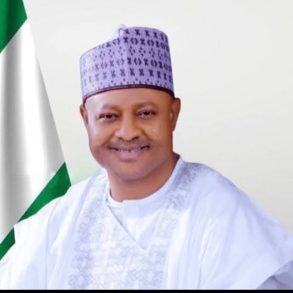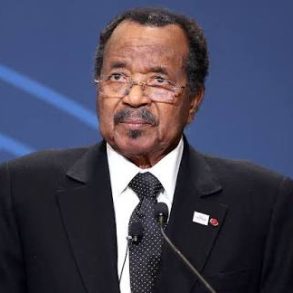By Abiodun Adeleke
The rise in Internet access and social media usage has changed the way Nigerians communicate, access information, and engage in social, political, and economic activities.
There is, however, a significant divide between Internet and social media penetration in Nigeria’s northern and southern regions.
This disparity springs from differences in infrastructure, economic development, literacy rates, and socio-cultural factors—on whose account Internet access and utilization of social media depend.
- Current State of Internet Penetration in Nigeria
With the Internet penetration rate at about 51% as of 2023, that means slightly over half of the population has access to the internet, mostly via mobile devices. However, this national average conceals critical regional differences.
According to the Nigeria Communications Commission, states in the south, like Lagos, Rivers, and Ogun, have some of the highest rates of internet penetration, while northern states like Yobe, Borno, and Zamfara have some of the lowest rates of internet access.
Lagos State, the commercial hub of Nigeria, has the lead in internet connectivity, with about 75-80% of its residents having access to the internet. In contrast, Borno and Yobe, two northern states affected most by security issues, have internet penetration rates estimated to be less than 25%.
Mobile Internet: In Nigeria, 3G and 4G networks continue to be the dominant means of access to the internet, though the quality of the networks is not consistent. The southern regions generally have better network coverage and speed, partly due to higher population densities and more robust economies that attract more investment in infrastructure.
- Social Media Usage Across the Regions
Social media is used throughout Nigeria, with Facebook, WhatsApp, Twitter, and Instagram** being the most used social media platforms; however, there is a concentration of users in the south. The data below from DataReportal’s 2023 digital report points to some key statistics:
Southern Dominance: states such as Lagos, Ogun, and Rivers have high usage rates, with platforms like WhatsApp reaching over 60% of internet users. Facebook and Instagram are popular social media sites, especially among the youth, which forms a great percentage of urban dwellers.
Low penetration in the north: The northern states have a low percentage of social media users. While WhatsApp still penetrates into states like Kano and Kaduna, these states record far fewer users for Twitter and Instagram, perhaps because there is less smartphone use and less digital literacy. For example, Kano has about 35% social media usage among the internet population—a level below the southern averages but still appreciable for the north.
- Factors Influencing the North-South Divide in Internet and Social Media Penetration:
Infrastructure Development: Southern Nigeria boasts better-developed infrastructure, including telecommunication networks, to support higher speeds and reliability of the internet. Most northern areas remain without consistent infrastructure due to challenges of geography, lower investment, and security concerns. Major providers like MTN and Airtel have focused their high-speed data networks mainly in urban areas of the South.
Education and Literacy Rates: Literacy levels are quite different between the two regions, which in turn affects digital literacy and how people can maneuver through online platforms.
According to the National Bureau of Statistics (NBS), states in the south, such as Lagos and Edo, have a literacy level above 85%, while states in the north, like Sokoto and Zamfara, have less than 35% literacy rate. The lower level of literacy in the North constrains the adoption of the internet and social media, since many cannot read and interact with digital content easily.
Economic disparities: The southern part of the country has a stronger economic base, with key drivers being oil, finance, and commerce.
This translates into higher average incomes, therefore raising the ability of people to afford data plans and smartphones. In contrast, the North, where economic development is lower and poverty is more widespread, thus faces challenges that reduce accessibility to mobile devices and the internet.
Socio-Cultural and Religious Factors: Some of the social and cultural norms in northern Nigeria, where there is a dominant Muslim population, limit access to digital platforms.
There are fewer women on social media platforms in the North because of more traditionalist views about gender roles, unlike in the South, where gender norms related to the use of the internet and social media are less restrictive.
4.Implications of the North-South Digital Divide
Economic Development: The North-South digital divide throttles the inclusive economic development. The probability of e-commerce platforms and digital marketing channels being used by businesses in the South increases; hence, the economic gap between the two regions widens.
Political Mobilization: Social media has evolved to be a very potent tool for both political mobilization and civic engagement generally in Nigeria, especially among the youths. The disparity means that northern youths are less engaged in these platforms, which limits their participation in national dialogues, activism, and election campaigns.
Access to information and education: The online knowledge will favor more southern students and professionals, since it improves educational and career advancement opportunities. On the other side, the northern population has limited internet access, which deters academic performance and competence in skill attainment.
- Recent Attempts to Close the Digital Divide
The Nigerian government, along with private sector entities, has tried to increase access to the internet and build digital literacy.
National Broadband Plan (2020-2025): This aims at increasing broadband penetration to 70% by 2025, focused on unserved and underserved areas, including the North.
The inclusion of partnerships with tech giants—on par with Google and Facebook—helped in the introduction of cheaper internet solutions, like setting up free Wi-Fi hotspots in key locations.
The educational and training programs: There are several NGOs working to bridge the gap in digital literacy in the North. Among them are the programs intended for young women in northern Nigeria that provide basic digital skills and online safety training.
In conclusion, while the penetration of the internet and social media continues to increase in Nigeria, the North-South divide remains wide and affects economic opportunities, education, and political engagement. Bridging the divide will require heavy investment in infrastructure, targeted digital literacy programs, and policies that guarantee equal access to information across the regions of Nigeria. It will be important to bridge this digital gap for allowing inclusive growth and providing equal opportunities for all Nigerians in the digital age.






